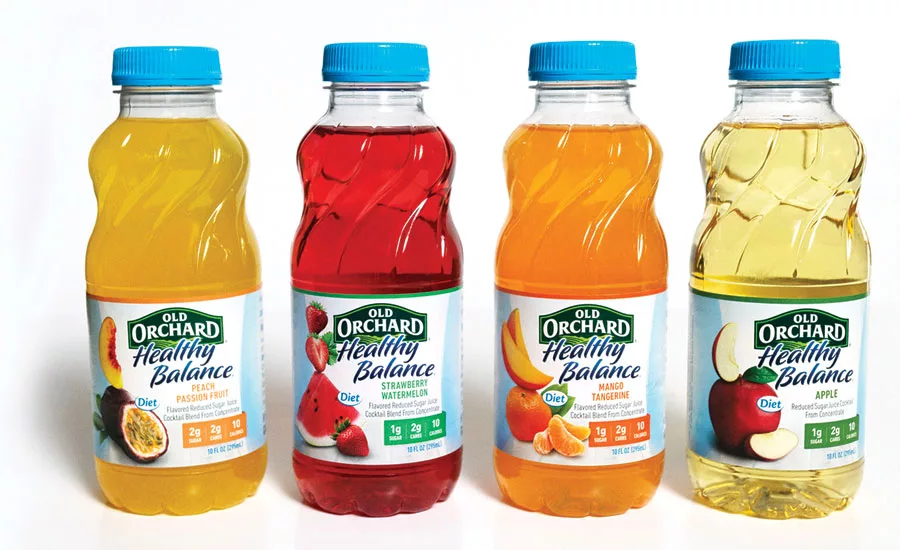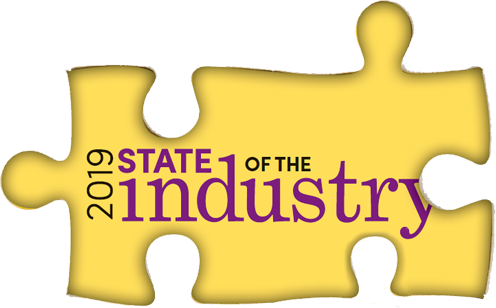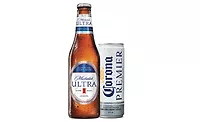2019 State of the Beverage Industry: Juice category challenged to maintain market share
Organic, premium juices drive slight growth for category

Sales of traditional juice and juice drinks have been declining for several years as consumers seek to reduce sugar consumption and are foregoing traditional at-home breakfasts, which often featured orange juice as a staple. In fact, household consumption rates of orange juice brands were 67.7 percent in 2016, down from 73.7 percent in 2004, according to national surveys conducted by Simmons Market Research Group.
The good news, however, is that other cutting-edge juice segments have been growing, according to Rockville, Md.-based Packaged Facts June 2017 report titled “Ready-to-Drink Beverages: Culinary Trend Tracking Series.”
“Brands such as Naked Juice and Odwalla with their refrigerated juice blends first appearing in the early 1980s, are the forerunners of an explosion in innovative new juice offerings,” the report states. “On the production front, growth has been fueled by the introduction of new production processes (high pressure, also called Cold-Pressure Processing juicing).
“On the consumer front, growth drivers include demand for juices with less sugar, an overall desire for healthier beverage options containing superfood and functional ingredients, and (especially for adult millennials), a quest for more authentic juice products, notably include fresh juices.”
(Individual brands)
| DOLLAR SALES | % CHANGE VS. PRIOR YEAR | MARKET SHARE | % CHANGE VS. PRIOR YEAR | |
| Vita Coco | $180,516,557 | -9.0 | 38.6 | -0.8 |
| Juicy Juice | $53,595,321 | -8.7 | 11.4 | -0.2 |
| Apple & Eve | $50,015,315 | 9.2 | 10.7 | 1.6 |
| Capri Sun | $33,847,166 | 18.6 | 7.2 | 1.6 |
| Minute Maid | $29,637,380 | -15.3 | 6.3 | -0.6 |
| Category total* | $468,194,037 | -7.0 | 100.0 | — |
*Includes brands not listed.
Source: Information Resources Inc. (IRI), Chicago. Total U.S. supermarkets, drug stores, gas and convenience stores, mass merchandisers, military commissaries, and select club and dollar retail chains for the 52 weeks ending May 19.
Juices made from high-pressuring processing (HPP) are seeing strong growth today as the pressure processing allows juices to preserve more nutritional content.
In Beverage Industry’s January issue, Diane Welland, registered dietitian for the Washington, D.C.-based Juice Products Association, noted that “more than 80 percent of Americans do not eat the recommended amount of fruits and vegetables,” adding that 100 percent juice is an easy, tasty way to incorporate more fruits and vegetables into the diet.
The association’s Sip Smarter website, sipsmarter.org, and interactive “Find Your Juice Match” tool is designed to give consumers science-backed facts about juice and to inspire them to feel good about enjoying juice as part of a balanced diet, she added.
(Individual brands)
| DOLLAR SALES | % CHANGE VS. PRIOR YEAR | MARKET SHARE | % CHANGE VS. PRIOR YEAR | |
| Naked | $522,115,202 | -3.6 | 65.1 | 0.5 |
| Bolthouse Farms | $152,694,027 | -12.8 | 19.0 | -1.9 |
| Odwalla | $30,586,015 | -10.3 | 3.8 | -0.3 |
| Dannon D'Animals | $19,388,247 | 2.90 | 2.4 | 0.2 |
| Naked Protein Zone | $15,541,170 | -22.7 | 1.9 | -0.5 |
| Category total* | $801,946,818 | -4.3 | 100.0 | — |
*Includes brands not listed.
Source: Information Resources Inc. (IRI), Chicago. Total U.S. supermarkets, drug stores, gas and convenience stores, mass merchandisers, military commissaries, and select club and dollar retail chains for the 52 weeks ending May 19.
To meet consumer demand for less sugar and on-the-go hydration, brands continue to release new single-serve juices. For instance, Sparta, Mich.-based Old Orchard’s Healthy Balance juice features 10-ounce single-serve juices with a twist cap in four varieties: Apple, Peach Passionfruit, Mango and Strawberry Watermelon. Each blend contains 10 calories and is sweetened with the non-caloric sweetener sucralose and fortified with vitamin C, the company says.
In Chicago-based Mintel’s June 2018 report titled “Juice and Juice Drinks – US,” the market research firm estimates that total juice sales will reach an estimated $19.5 billion, which represents a 1.2 percent decline from five years ago.
Yet, juices positioned toward children, organic and super-premium juices and drinks are a “bright spot” in the overall fruit beverage market, stated Gary Hemphill, managing director of research for New York-based Beverage Marketing Corporation (BMC), in Beverage Industry’s January issue.
(Individual brands)
| DOLLAR SALES | % CHANGE VS. PRIOR YEAR | MARKET SHARE | % CHANGE VS. PRIOR YEAR | |
| Tropicana Pure Premium | $899,986,146 | 0.6 | 31.7 | 1.2 |
| Simply Orange | $713,285,146 | -2.1 | 25.1 | 0.3 |
| Private label | $524,963,079 | -0.9 | 18.5 | 0.5 |
| Florida's Natural | $258,392,129 | -9.5 | 9.1 | -0.6 |
| Minute Maid Premium | $188,169,494 | -0.3 | 6.6 | 0.2 |
| Category total* | $2,843,449,056 | -3.3 | 100.0 | — |
*Includes brands not listed.
Source: Information Resources Inc. (IRI), Chicago. Total U.S. supermarkets, drug stores, gas and convenience stores, mass merchandisers, military commissaries, and select club and dollar retail chains for the 52 weeks ending May 19.
“Organic is a net positive for the category, but organic products are more expensive, which may be limiting their growth,” Hemphill said. “… Dedicated kids juice brands have had modest success. Tried and true bands like Juicy Juice and others are being joined by more premium options.”
Mintel’s report details how less-sweet juices could serve as a growth opportunity for the category.
“Twenty-seven percent of consumers says that most juice is too sweet but this increases to nearly half of consumers who want low sugar juice and don’t buy 100 percent fruit juice,” the market research firm states. “… Fruit juice blended with vegetables, coconut water, and even spices/herbs may appeal to consumers who want less-sweet juice.”
Given the mixed bag of variables impacting the juice and juice drinks market, BMC is predicting the juice and juice drinks market will contract during the next five years with a compound annual growth rate (CAGR) of 1.3 percent. “While not a cause for celebration, this would represent the category’s best performance since 2001-2006’s CAGR of -0.9 percent,” reports the market research firm in its August 2018 “U.S. Fruit Beverages through 2022” report. BI
Looking for a reprint of this article?
From high-res PDFs to custom plaques, order your copy today!






